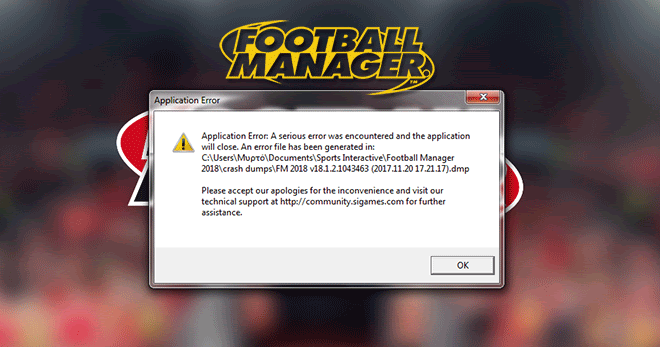CrashPlan features makes it easy to give your clients a ton of data protection, without giving it a ton of your time. Manage Files Anytime, Anywhere You and/or your clients can use the desktop app on Mac, Windows, or Linus to view, manage, monitor, and restore files quickly and easily. Microsoft Office 2016 applications may crash or cannot start. The applications that have been seen to be affected are Excel, Outlook, Skype for Business, Word, Access, Publisher, Project and OneNote. Additionally, in the Application Event log, you may find a crash signature similar to.
Yesterday my Mac suddenly crashed into a screen with blue (and white) lines. It wouldn't respond to anything, so I powered it down and tried to boot again. However, it will not boot. It will show the Apple logo, request my password and after a while (with the Apple logo and the spinning wheel) it just shows a blank screen (grey), while the CPU fans are spinning like crazy.Sometimes will it not even get this far and stop doing anything before requesting the password. The guest mode has the same problem.
I basically tried everything to fix it; the recovery option will also show the blank grey screen but nothing else (even after 30 minutes); the internet recovery downloads fine and then pulls the same stunt, so even the recovery will not work. I've tried save mode, which cannot start up (Filevault is activated) and seems to end mid-way through. Sometimes the safe mode crashes immediately after the boot starts with a kernel panic (/sbin/launchd failed, errno 2); after resetting the NVRAM it won't panic.
I've checked the hardware (T startup option, full check), which al seems to be OK. SMART status from the harddrive looks OK (checked with DiskWarrior). Starting in single user mode sometimes gets me through the password request screen and allows me to check the hard drive (fsck -fy). This seems to change permissions, however, after a reboot or exit command, the problem persists and starting up in single user mode and performing the fsck -fy command again seems to fix some issues. When I enter the exit command in safe mode, it'll start up fine, but when the graphic user interface starts, it'll give me the grey screen again (so a blank screen, while the CPU fans are at full power).
Does anyone have any idea what I can do to fix this? Since even the recovery will not start (and neither will the internet recovery), I've got no clue what to do to fix this issue...
MacBook Pro, OS X Mountain Lion (10.8.5)
Posted on
About unexpected restarts
Rarely, your Mac might experience a software or hardware issue that requires it to restart. When it starts up again, you might see a message that your computer was restarted because of a problem.
Unexpected restarts are usually caused by software installed on your Mac, or by devices connected to your Mac. If the issue causes your Mac to restart every time it attempts to start up, your Mac might eventually shut down. Use the steps below to check the software and hardware on your Mac.
Check your software
If the issue is caused by software on your Mac, one of these steps might help:
- Install all available software updates.
- If your Mac suspects that a particular app caused the restart, it might ask whether you would like to move the app to the Trash. Click Move to Trash, then contact the software developer to see if a software update is available.
- Use safe mode to try to isolate the cause of the issue.
- Reinstall macOS. If the issue continues after reinstalling macOS, check your hardware.
Check your hardware
Learn how to check your connected devices and other hardware.
Check peripheral devices first

If you don't have any devices attached to your Mac, skip to the next section.
Sprint Protection App
- Shut down your Mac.
- Disconnect all peripheral devices, such as hard drives or printers. If you have a desktop Mac, make sure that only a display, keyboard, and mouse or trackpad are connected.
- Turn on your Mac.
- Use your Mac for the amount of time that it would usually take for an unexpected restart to occur.
- If an unexpected restart occurs, follow the steps to check the internal RAM and third-party hardware.
- If an unexpected restart doesn't occur, turn off the Mac and connect one peripheral device at a time until an unexpected restart occurs.

Check RAM and third-party hardware
Mac Folder Additional Protection App Crash Youtube
Certain models of Mac computers have removable memory (RAM). If you recently installed memory or a hard disk (or SSD), make sure that it's compatible and installed correctly. If possible, remove it and test with the original memory or disk.
Learn more
Mac Folder Additional Protection App Crash Report
- If you continue to experience unexpected restarts, contact Apple Support.
- If your Mac is frequently restarting unexpectedly, it's important to determine the exact steps that lead up to the issue. The next time that your Mac restarts unexpectedly, record the date and time it occurs. These questions might help you diagnose the problem:
- Was the computer starting up, shutting down, or performing a particular task when the unexpected restart happened?
- Is the computer restart random, or does it happen every time you do a certain task?
- Does the restart happen when a specific external device is connected to your Mac or to a specific port?
- Learn what to do if your Mac doesn't turn on or start up.
- Learn about the screens you see when your Mac starts up.